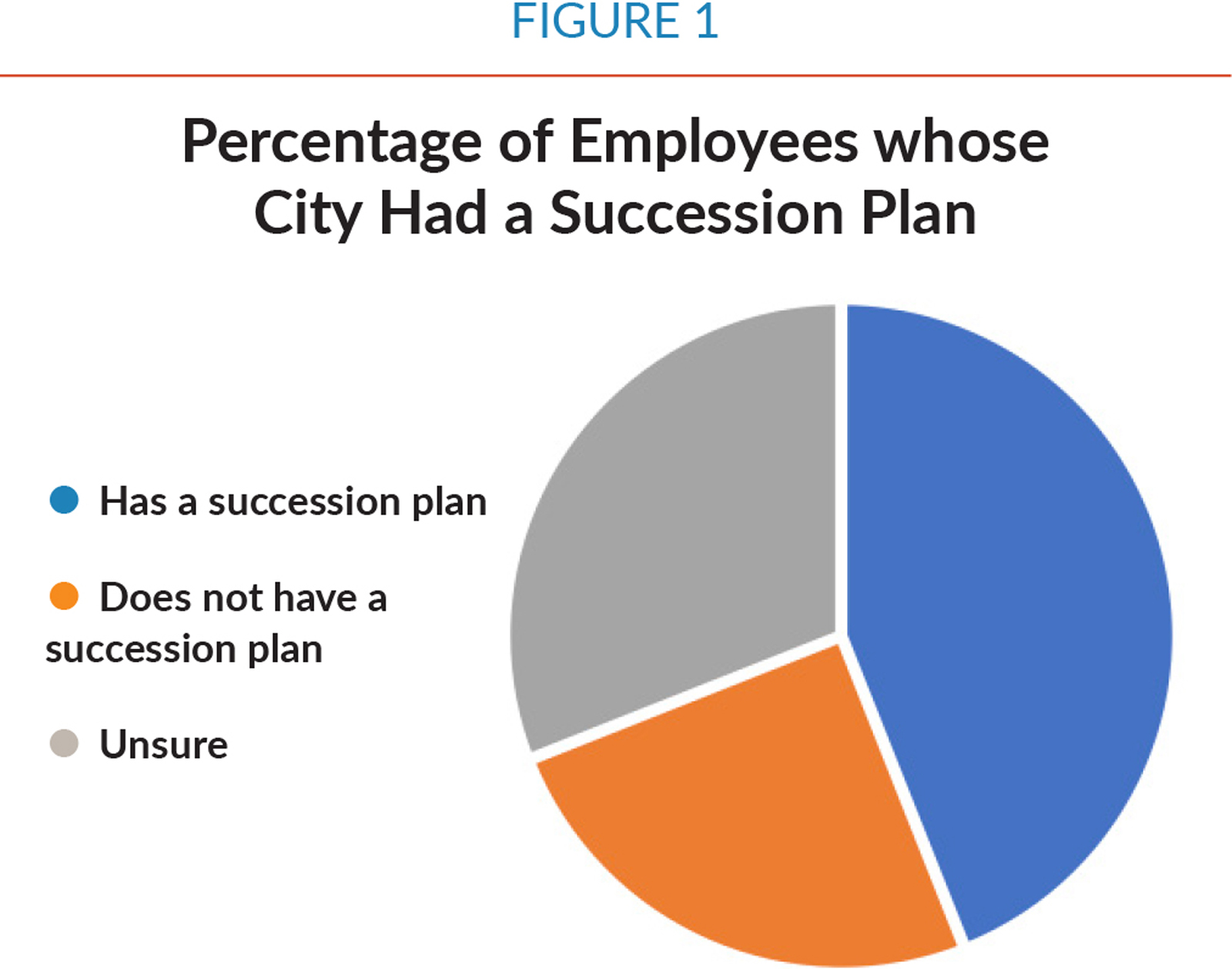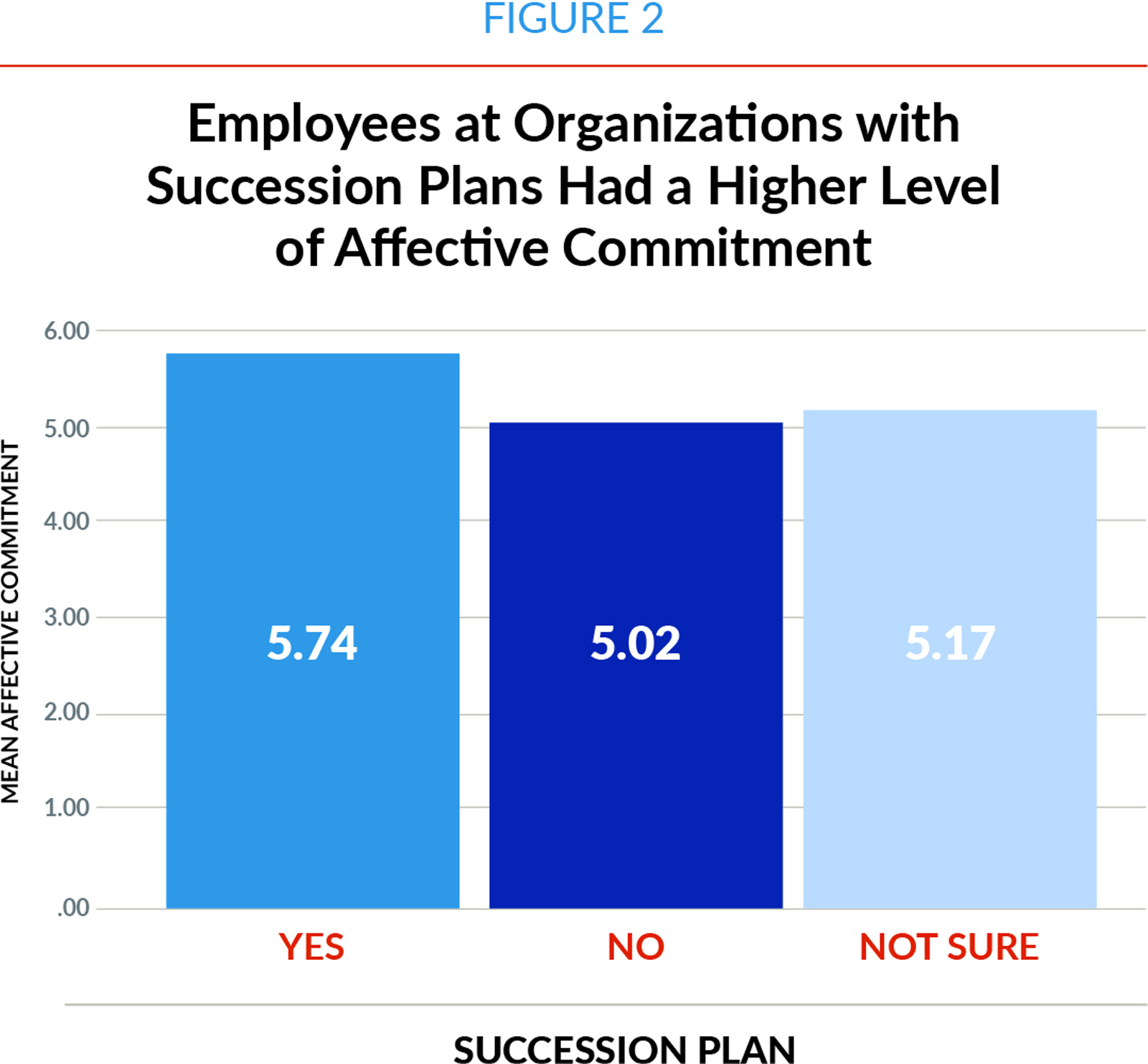
Over the next five to six years, large numbers of Baby Boomers employed in local government will be retiring. These retirements will greatly impact the workplace since many of these individuals are employed in senior management positions.1
This “silver tsunami” will result in the loss of highly trained, knowledgeable, and experienced employees in critical leadership positions within city and county governments. At the same time, it is anticipated that there will be a lack of qualified individuals who will be trained and ready to meet the increasing demand for these key positions.2
One of the most effective ways that local governments can be prepared to address their current and future leadership needs is to implement a comprehensive employee succession program. Once succession planning is fully implemented, it can have a major positive effect on the long-term success of the organization.
This article is intended to share the experience with succession planning in the city of Fredericksburg, Texas, over the past several years. In addition, this article includes some of the positive impacts on organizational commitment that can be realized from succession planning, based upon my research involving 16 cities in Texas and Arkansas.
The City of Fredericksburg’s Succession Planning Program
Fredericksburg is a beautiful historic community with a year-round population of 11,000, located in the scenic Texas Hill Country about an hour from both San Antonio and Austin. The local government includes about 175 full-time employees in 12 departments. Many of these employees have spent their entire career with the city. In the past year, the city has had four employees retire with over 30 years of city service.
In 2016, Fredericksburg recognized that its workforce was aging with several key employees approaching retirement in the next five to 10 years. In addition, the workforce was projected to increase over the next several years, including the addition of several new leadership positions. So, the city started a process of identifying key employees in leadership positions that planned to retire during the next five years. In addition, a staffing plan was completed showing the anticipated future staffing needs, including key management positions that might be added during the next five years. This needs assessment also helped identify future opportunities for existing employees who wanted to be considered for promotions.
The city has historically experienced challenges recruiting individuals from outside the area for management positions, as well as other positions such as police officers and paramedics. One of the primary reasons for this is the limited workforce housing availability. Recently many of the existing residential units have been purchased for use as short-term rentals (STRs) with over 700 STRs now permitted by the city. The cost of housing has also been impacted by increased land prices and a decreased number of construction workers. During the past year, housing costs have increased by over 20 percent with the average cost for a single-family home now at over $520,000.
So, in addressing the need to fill key leadership positions, the city decided to focus on identifying employees who had leadership potential within the organization who were already living in the Fredericksburg area, and began by asking several questions about these individuals. Do they have the passion and desire necessary to assume a leadership position? Do they share the long-range vision of the community? Are they content with their current position or do they aspire for professional growth and promotional opportunities? What are their values and are these values consistent with the organization’s values?
Following the identification of these future leaders, we committed to providing them the training and experience that they needed to effectively compete for future promotional opportunities. During this process, the city was careful not to mislead the employees to believe that they were “entitled” to these future leadership positions, but rather we wanted to ensure that they had the basic experience and skills necessary to be considered for promotions. This training included both classes outside the organization, as well as leadership training that I conducted, which included presentations on leadership models currently being followed in local government organizations, such as servant leadership and authentic leadership. In addition, classes were taught on emotional intelligence and ethics. Employees were challenged to develop their own definition of leadership that they wanted to serve as their personal model as they continued their career with the city.
This succession plan has been in place for about four years and has resulted in the promotion of several employees to key leadership positions. In 2017, our employee succession planning was recognized by the Texas Municipal League with a Municipal Excellence Award. The employee succession program was updated in 2020 to address changes in the future staffing needs of the city.
Authentic Leadership and Organizational Commitment
Several years after the successful initiation of the employee succession program, I decided to conduct a research study on succession planning and authentic leadership for my PhD dissertation. More specifically, my research was “A Study on Local Government Succession Planning and the Relationship Between Authentic Leadership and Organizational Commitment.
One of the primary reasons that I choose authentic leadership for this study is that it is a relatively new model of leadership.3 Authentic leaders are often described as having high moral character and a high level of self-awareness and awareness of others.4 The four basic qualities of the authentic leader model include self-awareness, relational transparency, balanced processing of information, and an internalized moral perspective.5 Having spent more than 40 years in city management, I believe that these are important leadership traits that all city managers should possess.
As I was considering the positive results that our organization realized from succession planning, one of the benefits that I identified was an increase in our employees’ commitment to our organization. Therefore, I decided to research whether employees working in local governments that had a structured succession planning program in place were found to be more committed to their organizations. This is important because researchers over the past 30 years have maintained that organizational commitment has the potential to predict organizational outcome, such as performance, turnover, absenteeism, job tenure, and adherence to organizational goals.6
Organizational commitment is often characterized as the psychological attachment that an employee has to an organization and can take different forms:
• Affective commitment is an employee’s emotional attachment to and identification with their organization.
• Continuance commitment is defined as the level of commitment of an employee based upon their assessment of the costs with leaving the organization.
• Normative commitment is the feeling of obligation on the part of the employee to remain with the organization.7
Survey of Local Government Employees
Fifteen cities in Texas agreed to participate in the study (Fredericksburg, Boerne, Marble Falls, Leon Valley, Coppell, Irving, Hurst, Seguin, Live Oak, Converse, Cibolo, Weatherford, Kyle, Dripping Springs, and Bryan), as well as one city in Arkansas (Hot Springs). Several of these cities indicated that they had adopted and fully implemented employee succession plans, while some of the cities acknowledged that they did not have succession plans. Employees in these cities were sent a link to an online survey and were requested to participate in the survey on a voluntary anonymous basis.
The survey received a total of 536 responses, including 224 female respondents and 312 male respondents. The average job tenure was 8.45 years and the respondents had an average age of about 46. Most of the respondents (55 percent) served in supervisor positions with an average of more than eight years serving in a supervisory capacity. The respondents represented a relatively high level of educational achievement with two-thirds acknowledging that they had at least an associate’s degree. As shown in Figure 1, 44 percent of the respondents (234) worked in a local government that had a succession plan, while 25 percent (135) employees indicated that their organization did not have a succession plan in place. Unfortunately, 31 percent of respondents (166) were unsure whether their employer had an employee succession plan.

Analysis
Data gathered from the survey responses were then loaded into SPSS statistical software for analysis, which included an assessment of the correlations between the different variables used in this study, such as the respondent’s age and the overall level of authentic leadership that they perceived in their supervisor. This correlation also determined the relationship between the three aspects of organizational commitment (affective commitment, continuance commitment, and normative commitment) with the four individual constructs of authentic leadership (relational transparency, self-awareness, moral/ethical, and balanced processing). For example, all four constructs of authentic leadership were shown to have a moderate correlation with affective commitment and normative commitment and a weak correlation with continuance commitment.
Extensive analysis indicated that employees who worked in organizations with succession plans had a higher level of affective commitment than employees who worked for organizations that did not have succession plans, and higher than employees who were not sure whether their organization had a succession plan. See Figure 2. The multiple regression analysis also showed that succession planning was a positive predictor of the variance in scores on affective commitment. So, employees who worked in organizations with succession plans had higher levels of affective commitment, meaning they have a greater emotional attachment to and identification with their organization.

Other significant findings of this research study include the fact that succession planning was also a positive predictor of both normative commitment and continuance commitment. Therefore, the study showed that employees who worked for organizations that had succession plans had higher levels of all three commitment types than employees who worked for organizations that did not have succession plans.
Another interesting finding in the study was that the higher level of moral/ethical and relational transparency traits perceived in supervisors, the higher the level of the employees’ affective commitment to the organization. In addition, relational transparency was a positive predictor of both affective commitment and normative commitment. In addition, overall authentic leadership scores were positive predictors of affective commitment, normative commitment, and continuance commitment.
Conclusion
By adopting and implementing a succession plan, an organization is planning for its future in terms of staff development and replacement of key leadership positions with qualified internal candidates. It shows that they care for their employees and that they have a commitment to their future personal growth and progress.
By knowing that they are part of a succession plan, the employee recognizes that they play an important role in the future of the organization. Therefore, they tend to have a higher level of emotional attachment to the organization (affective commitment), a higher sense of obligation to the organization (normative commitment), and are committed to staying with the organization (continuance commitment).
As local government leaders consider the development of an organization-wide succession plan, it’s important to recognize these positive impacts to employee commitment. Employees who have higher levels of commitment are considered to have an investment in their organization. And local governments can benefit from this higher level of employee commitment in many ways. Employees who have higher levels of organizational commitment have been shown to have higher levels of morale, productivity, and dedication to the organization.8

KENT MYERS has served in local government for more than 40 years and is currently city manager of Fredericksburg, Texas.
Endnotes and Resources
1 Maciag, M. (2016). The Silver Tsunami Has Arrived in Local Government, http://www.governing.com/topics/mgmt./gov-government-retirement-survey-denter-state-local,html?term=.
2 Hollifield, R. (2017). Creating Culture in Succession Planning, Texas Town and City, June 2017, 20-21.
3 Luthens, F. & Avolio, B.J. (2003). Authentic Leadership: A Positive Developmental Approach. Positive Organizational Scholarship, Barrett-Koehler, San Francisco, 241-261.
4 Avolio, B.J. & Gardner, W.L. (2005). Authentic Leadership Development: Getting to the Root of the Positive Forms of Leadership. The Leadership Quarterly, 16 (2005), 315-338.
5 Allen, N.J. & Meyer, J.P. (1990). The Measurements and Antecedents of Affective, Continuance and Normative Commitment to the Organization. Journal of Occupational Psychology, 63, 1-18.
6 Meyer, J.P. & Allen, N.J. (1991). A Three-Component Conceptualization of Organizational Commitment. Human Resource Management Review, 1, 61-89.
7 Ibid.
8 Steers, R.M. (1977). Antecedents and Outcomes oof Organizational Commitment. Administrative Science Quarterly, 22, 46-56.
New, Reduced Membership Dues
A new, reduced dues rate is available for CAOs/ACAOs, along with additional discounts for those in smaller communities, has been implemented. Learn more and be sure to join or renew today!
